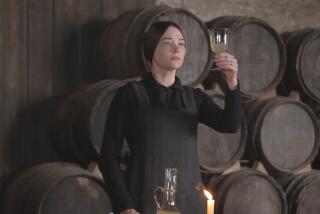Champagne Marketers Prepare to Party in 1999
- Share via
PARIS — Thierry Corbin will this year order thousands of bottles of Taittinger, Veuve Clicquot and other champagnes to sell to companies planning a Dec. 31, 1999, bash, betting he can earn a hefty profit.
Corbin figures that by the time he comes to sell the sparkling drink next year, prices will have soared as companies snap up thousands of bottles for parties on New Year’s Eve. The companies are likely to buy early in the year, he expects, to avoid top prices in the weeks before Jan. 1, 2000.
“They’ll save money, I’ll rake it in,” said Corbin, a French caterer who expects to sell 2,500 bottles.
LVMH Moet Hennessy Louis Vuitton SA, the world’s largest champagne maker; Taittinger SA; Remy Cointreau SA; Seagram Co.; and Vranken Monopole are among the companies benefiting from shoppers planning their year-end celebrations. Champagne sales are expected to rise 20% to a record $3.3 billion in 1999 from 1997.
Europeans are already planning their 1999 New Year’s Eve parties. The U.K. government is building a dome in London that will house an exhibition looking back on the last 1,000 years and looking at how the world will change in coming years. The French have saddled a giant clock on the Eiffel Tower, the nation’s most famous monument, to count down to 2000.
Champagne supply is limited because production of the drink is restricted to a 12,000-acre region in northeastern France that gave its name to the drink. The organization that represents producers and controls distribution of the drink said it will increase the number of bottles on the market by 10% to about 330 million bottles in 2000, betting that demand building up to 2000 will be sustained thereafter.
Champagne sales are likely to rise 5% to 10% in volume both this year and in 1999, companies and analysts said. That compares with average annual gains of 2.5% in the last three decades.
“1999 will be a record year for the industry,” said John Wakely, beverage analyst at Lehman Bros. in London. “There’s potential for shortages at the top end of the scale in particular.”
Champagne is made from a blend of up to 30 still wines and differs from other wines because producers add yeast and sugar to induce a second fermentation in the bottle. The second fermentation puts the bubbles in the drink. The drink, which has existed since the mid-19th century, always has been linked to celebrations and always has commanded premium prices.
“Champagne makers have always been great at marketing,” Francoise Peretti, a spokeswoman for the Comite Interprofessionnel du Vin de Champagne, the French champagne association, said.
Champagne sales were boosted in recent years by accelerating economic growth in the U.S. and U.K., offsetting sluggish demand in France. In the U.K., the biggest export market, volume sales soared 52% in five years. Paris retailers sell champagne anywhere from $13 to $339 a bottle.
“The U.K. economy is healthy, so people are willing to spend more,” Peretti said. The acceleration of economic growth in France this year could be an added boost to the industry, analysts said.
Remy Cointreau, maker of the Krug brand, said it’s seeing higher-than-average demand for its prestige vintages, including Krug, Crystal Roederer, spokeswoman Joelle Jezequel said. And Vranken Monopole said it too is getting hefty orders from companies, especially for Diamant Bleu and Heidsieck, which was bought from Seagram Co. in 1996.
“Next year will be one of our best,” said Paul-Francois Vranken, chief executive and founder of Vranken, which was sold in an initial public offering last month. The Vranken IPO was more than 50 times subscribed.
“I’ve already sold a third of my orders for the second half of 1999, which is exceptional,” said Nicolas Gueusquin, a champagne wholesaler based near Epernay, the hub of France’s champagne-producing region. “I’m having problems meeting demand.”
Gueusquin said it will raise the prices it charges to retailers by 10% this year and a further 10% in 1999. Other manufacturers are raising prices by a more modest amount, relying instead on higher volume to boost profit. Grape prices are expected to be held down over the next three years.
More to Read
Inside the business of entertainment
The Wide Shot brings you news, analysis and insights on everything from streaming wars to production — and what it all means for the future.
You may occasionally receive promotional content from the Los Angeles Times.










